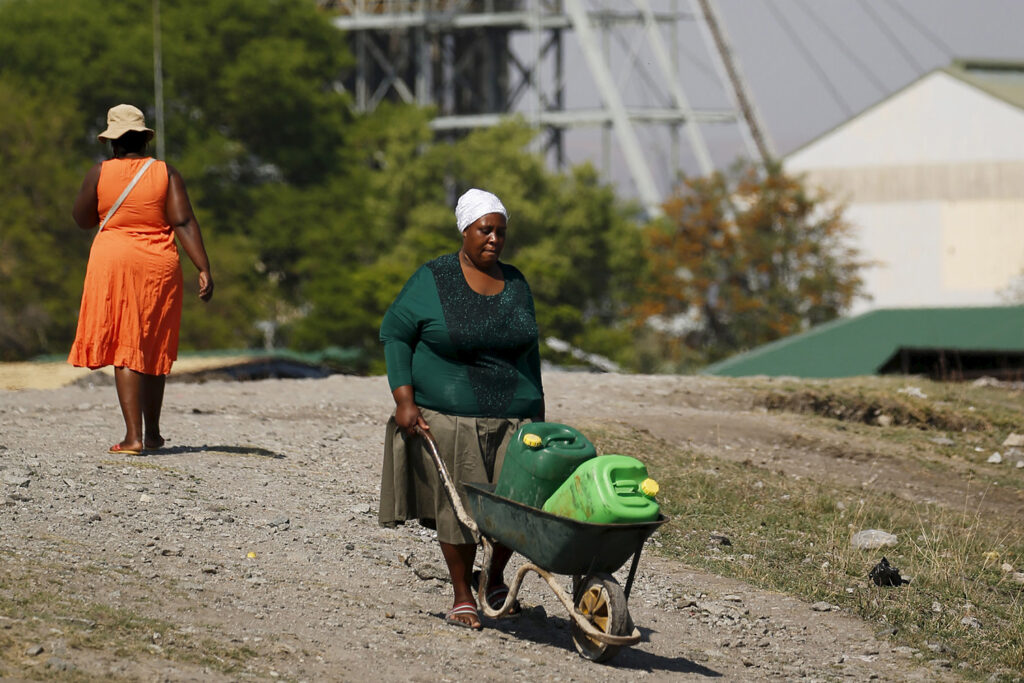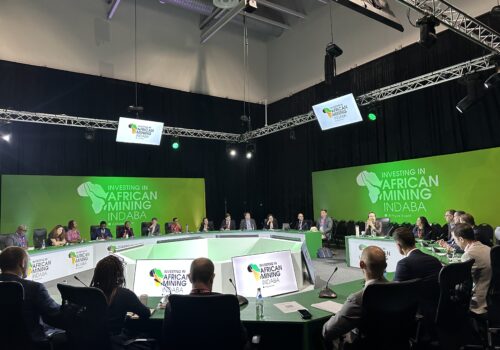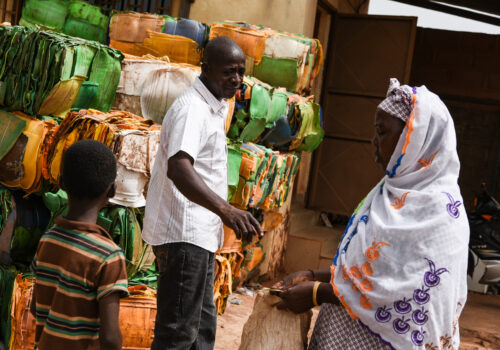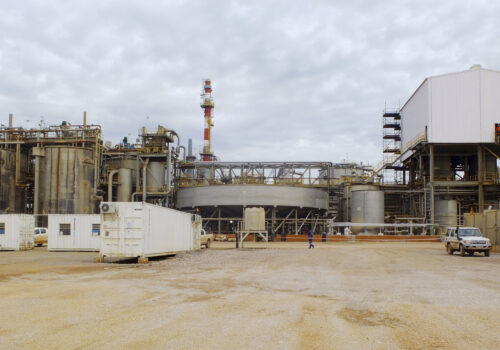Women are an integral part of the mining economy in Sub-Saharan Africa.
In the informal or artisanal and small-scale mining (ASM) sector, women’s participation is estimated at up to 50 percent. But despite their contributions, women across the region are subjected to discrimination—which results in fewer socioeconomic and professional opportunities—in addition to sexual and gender-based violence.
Today, the increasing demand for critical minerals has led global powers, including the United States, to consider critical-mineral deals globally in order to create stronger and more sustainable supply chains. African countries thus have a newfound opportunity to prioritize their development goals—but they first must address the discrimination and violence against women taking place across the industry.
For African countries to empower their women miners, they must tailor formalization pathways of women ASM miners and support grassroots organizations as operational partners, while deploying policies aimed at addressing gender biases in the industry and on a macro scale.
The reality for women miners
In the ASM sector, where working conditions are unsafe, women face gender-based discrimination and physical harm. Women miners are ninety times more at risk of death than their male counterparts, according to the World Bank. Women miners also face sexual violence, which is especially prevalent in conflict areas: For example, amid the ongoing conflict between Congolese armed forces and Rwanda-backed M23 rebels, women (both miners and not) reported 895 rapes in the last two weeks of February 2025, averaging sixty reports per day.
In the ASM sector and in large-scale mining (LSM), women have also been allocated fewer technical jobs in addition to unequal access to mining rights, tools, and financial resources, all diminishing their ability to achieve financial growth. Their restricted economic mobility often confines them to ancillary services such as preparing food and cleaning mineral ore. But regardless of the roles they take, women miners often receive lower wages than men for the same labor. Discrimination also results in women miners taking on a disproportionate burden of labor overall, as many are responsible for housework in addition to mining activities.
Legal infrastructures also reinforce discrimination against women miners: For example, the DRC’s Mining Code stipulates that pregnant women are not allowed to work in mining. Similarly, sections 55 and 56 of Nigeria’s 2004 Labor Act prohibit women from working in industrial undertakings, including mining, during nighttime hours and from doing any manual labor underground. These unequal legal measures can push more women to informal mining practices, making them more vulnerable to physical and gender-based harm.
Tapping the opportunity
African countries, for their development and economic growth, must address the challenges women in both ASM and LSM face, with policies that are tailored to the needs of local mining communities.
African countries must offer easily navigable pathways for ASM miners to formalize—and such pathways must be customized for local contexts. Formalization is particularly complex in regions with conflict and legal pluralism. There are frameworks available to guide African governments in this endeavor. For example, a nongovernmental organization called Pact has publicly put forth the model it uses to engage communities in formalization, tailoring the approach to the needs of local artisanal miners. Such a model includes stakeholder engagement and educational training for miners, in addition to support with securing licenses and land access and with addressing human rights and safety concerns.
African governments should also support local grassroots organizations in operationalizing these efforts to improve the well-being of women miners and their economic prospects. In the ASM sector in particular, these organizations are integral to reaching women miners, especially in spaces where governments lack reach. For example, Tanzania’s Women Miners Association economically empowers women miners through initiatives that organize savings and credit cooperative societies and support women as they work to acquire mining licenses and market access. An organization called IMPACT leads initiatives for women-led mining businesses to improve women miners’ safety and foster inclusion in global supply chains. IMPACT supported the building of at least fifty village savings and loans associations in the DRC and Burkina Faso, involving nearly three thousand women and men who saved more than $176,000.
In addressing women’s challenges in the mining sector—both ASM and LSM—more broadly, African governments must also deploy policies that are gender inclusive and women-centric in order to alleviate the gendered struggles of women in the mining sector. There are already positive examples of such policies on the African continent, some being South Africa’s programs to improve women’s participation in the LSM sector. In addition, the Rwanda Mines, Petroleum, and Gas Board implemented a gender strategy to improve awareness about the role of women in mining and to boost capacity building. Governments should also encourage women’s participation in mining governance.
Leveraging partnerships
Safeguarding and empowering women is essential for upholding human rights and fostering inclusive sustainable growth. While ensuring peace and stability, African countries need to leverage partnerships to advance their development goals.
As countries move forward on critical-minerals deals, they must do so ensuring that there will be mutual economic gains from such agreements. For example, the DRC must leverage its potential mineral deal—in which the United States would provide security against the Rwanda-backed M23 rebel attacks in exchange for access to DRC’s critical minerals—for community development. While signing any deal, governments should foster multistakeholder partnerships with grassroots organizations that can help reach women miners and advance development goals in Africa’s booming mining sector, for an inclusive and equitable future for all.
Neeraja Kulkarni is a researcher, writer, and development practitioner with experience in decarbonization, community resilience, and international development. The views expressed in this article are her own.
Further reading
Thu, Mar 27, 2025
Prioritizing access to critical minerals will require prioritizing Africa
AfricaSource By Benjamin Mossberg
Access to critical minerals is an urgent national security issue. The United States must view investments in African energy, mineral, and mining—key to securing this access—with similar importance.
Fri, Mar 21, 2025
In the scramble for Africa’s critical minerals, the West must not abandon the ESG agenda
AfricaSource By
As this race for minerals and metals critical for the energy transition heats up, both companies and governments must not abandon environmental, social, and governance principles in Africa.
Wed, Aug 14, 2024
Critical minerals investment must avoid the mistakes of the past in African mining
AfricaSource By Rama Yade, Sibi Nyaoga
By getting mining investment right, the United States can set a new precedent for its collaboration with African countries in other areas, such as health, security, and technology.
Image: A women pushes a wheel barrow transporting water as she walks past the Anglo American Platinum's Thembelani mine near the mining town of Rustenburg, northwest of Johannesburg, South Africa on October 5, 2015. Photo via REUTERS/Siphiwe Sibeko.




